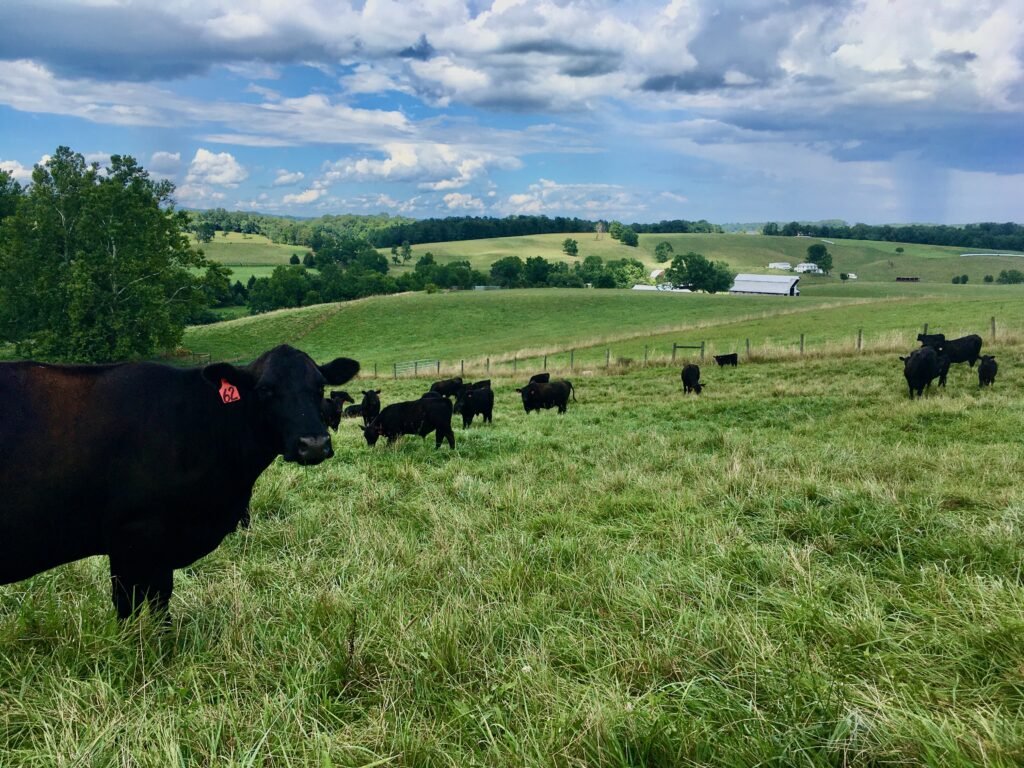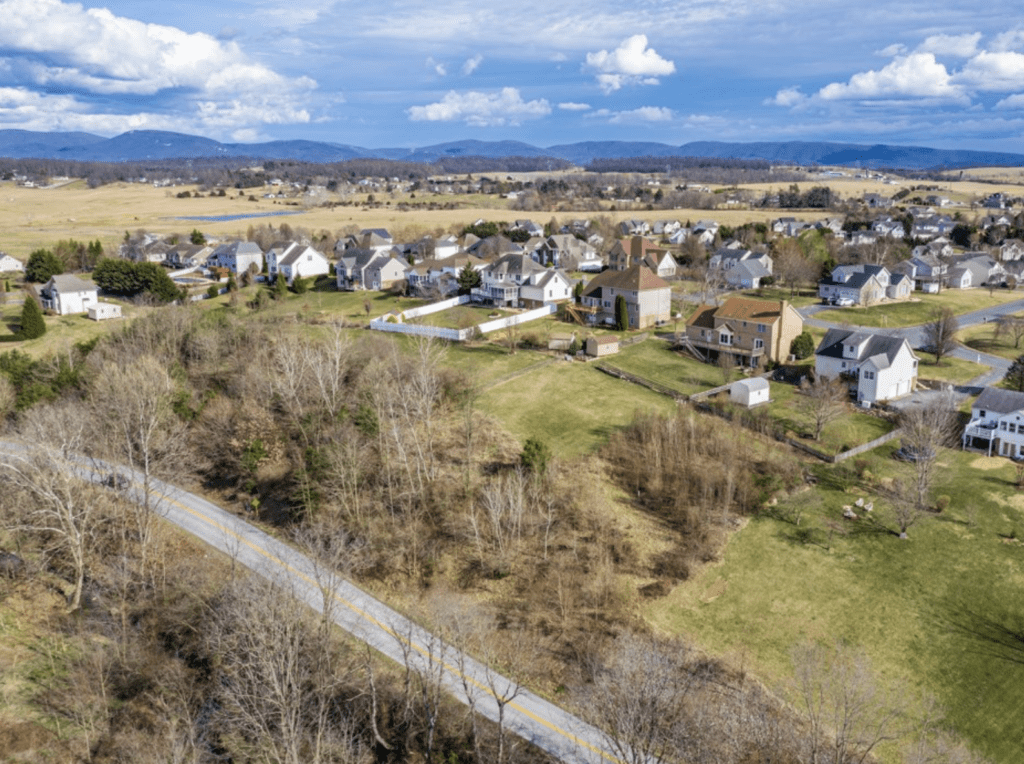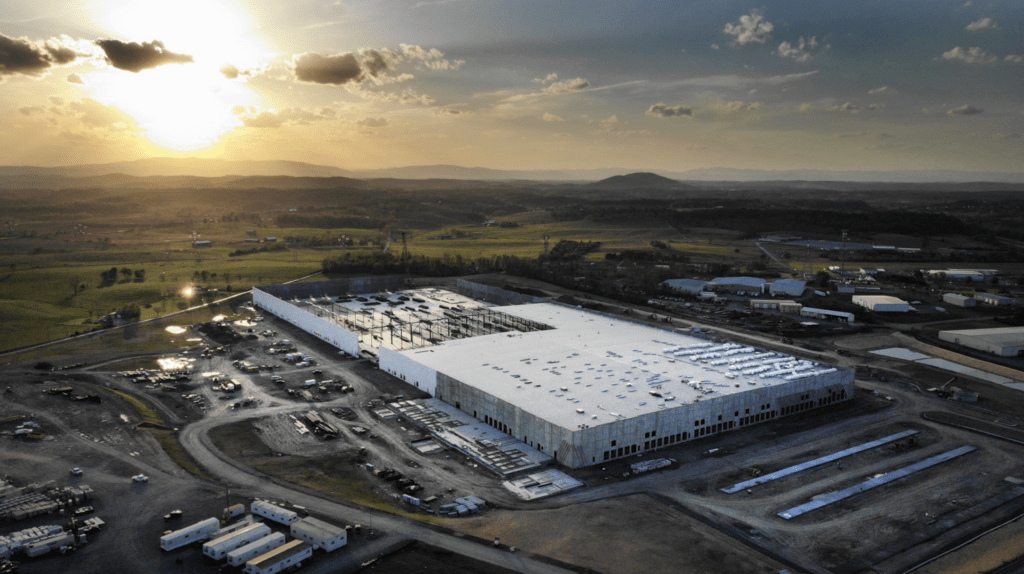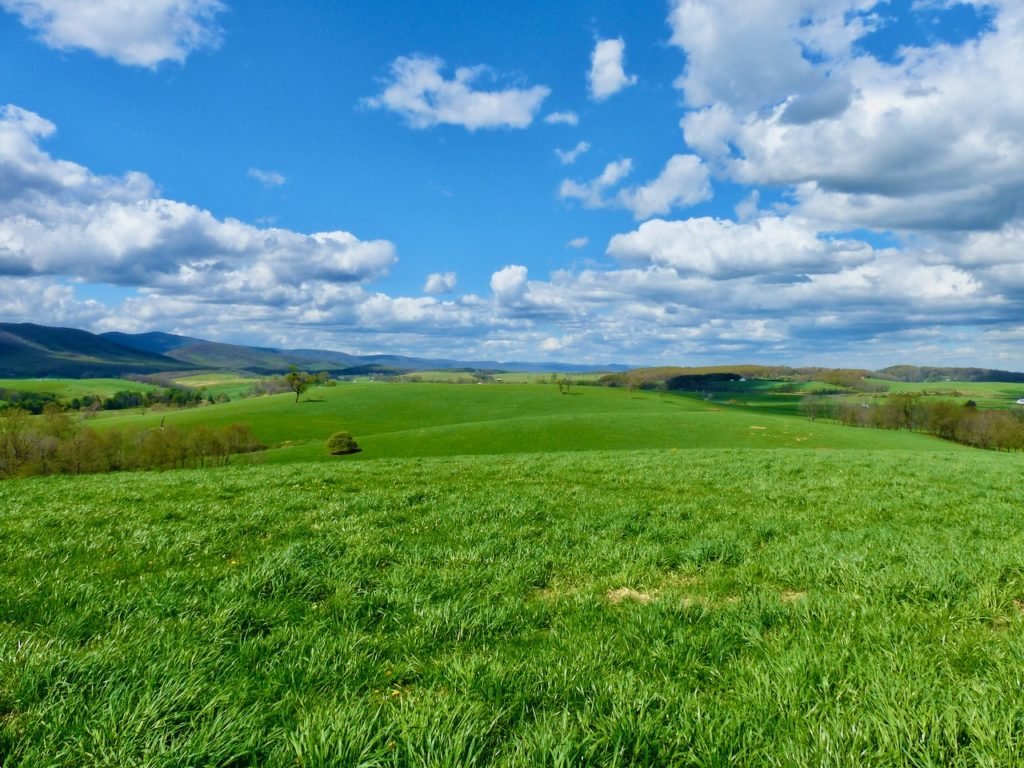Note: This was written by a real person: me.
Farming is the heart and soul of the Shenandoah Valley and the number one industry in most counties. But perhaps not for long. As I drive around, I can hardly look anywhere without seeing houses, cookie-cutter subdivisions, or big box stores you see in every town USA. We are allowing development to gobble up, convert, and pave over that which makes our Valley so special. Farmland conservation is critical for protecting those rural values that make the Shenandoah Valley legendary.
Amazon recently built a one-million-square-foot distribution center in Fishersville, Virginia. That’s as big as 23 football fields. Its parking lot seems just as big. Surprisingly, there are no plans for solar panels on this facility.
This and other new developments across the country are happening at an alarming rate: one acre every sixty seconds, according to the National Resource Inventory conducted by the Natural Resources Conservation Service. Most of that new development took place on farmland.
I wish there were as many incentives to protect farmland from development as there are to convert those beautiful landscapes that produce our food and shelter wildlife into urban and rural sprawl, concrete, and pavement. If anyone wants to sell a piece of land for development, plenty of help is available. But there are incentives to protect farmland from development—for both the landowner and rural communities. And help is available to do that too.
Farmland Conservation is a Great Bargain For the Public
Well-managed farmland produces food, feed, fiber, fertilizer, and fuel, but it also offers what are known as conservation values. Rainwater percolates through its soil to recharge our groundwater. Farmland can reduce greenhouse gases by incorporating plant residue into the soil. Its broad expanses can be used to produce renewable energy through solar and wind technologies. It provides wildlife habitat and the beautiful scenery the Shenandoah Valley is famous for.

Whiskey Creek Angus farm in the Shenandoah Valley. This farm will remain as farmland forever. Photo credit R. Whitescarver
A Conservation Easement is the Tool To Save Farmland
One great way to protect farmland from development is with a conservation easement, which is a legal arrangement between the landowner and a land trust to protect the property’s conservation values. A land trust is an organization or unit of government that promises to uphold the covenants in the conservation easement that both parties agree to. A typical covenant in a conservation easement would be the restriction of the owner’s development rights, preventing subdivision of the property.
Financial incentives for the owner to establish an easement include direct payments, federal tax deductions, state tax credits, and lower estate taxes.
Financial Incentives For the County to Support Easements Are Huge
Tax rates can remain low because keeping property as farmland avoids the costs of development that the rest of us must pay, such as for new schools, wastewater treatment upgrades, and other services that people demand when they move to the country. Cows don’t get on the school bus.
Counties can become certified conservation-easement-holding entities. Clarke and Shenandoah counties are certified to hold conservation easements which allows them to double or even triple their investment dollars. These funds are available from USDA, the Commonwealth of Virginia, and the Alliance for the Shenandoah Valley. Investing a million dollars in conserving farmland today could avoid $50 million or more in future development costs. Find out how to become a certified easement-holding county here.
Land Trusts Are Ready to Help
Several land trusts are working to offer farmland owners in the Shenandoah Valley an alternative to selling out to development. These include the Valley Conservation Council, the Land Trust of Virginia, the Potomac Conservancy, the Virginia Outdoors Foundation, the Virginia Department of Forestry, the Shenandoah Valley Battlefields Foundation, the Black Family Land Trust, and the American Farmland Trust. Contact them to find out more, and encourage your county supervisors to make their county a certified conservation easement holding entity.
Need more information or help?
Contact me at 540-280-7134 or bobby.whitescarver@gettingmoreontheground.com
Jeanne and I put a conservation easement on our River Farm in 2005 and on Whiskey Creek Angus Farm in 2022. Our journey is chronicled here.
There’s more help:
Alliance for the Shenandoah Valley




Leave a Reply
Your email is safe with us.